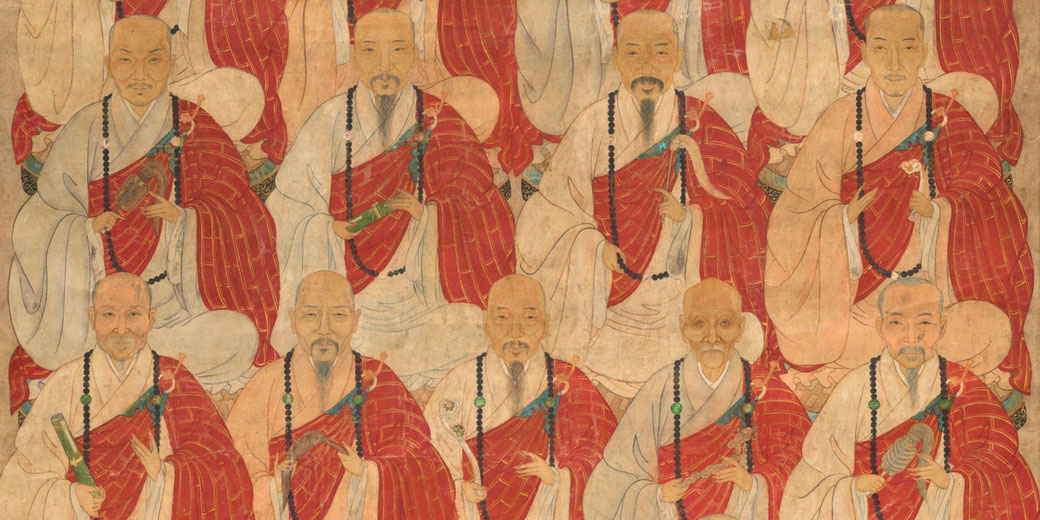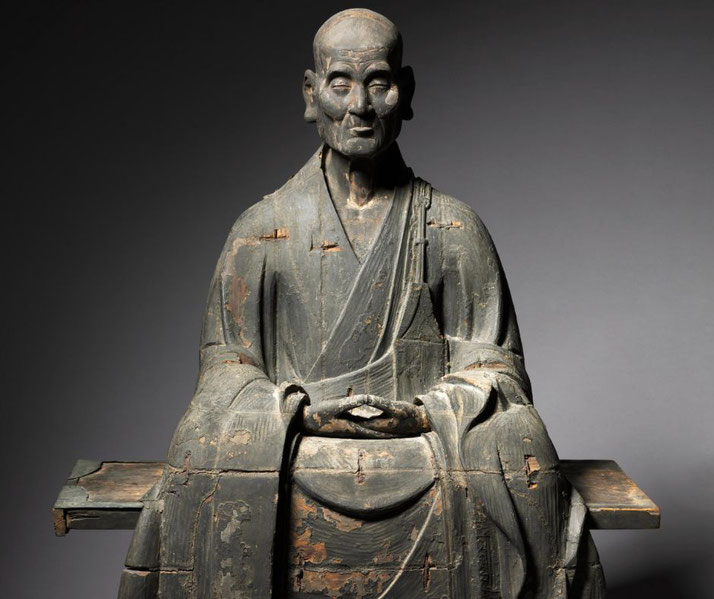The massacre of 2000 Buddhist monks who refused to submit to a ruthless Japanese warlord

In 1571, Oda Nobunaga ordered the complete destruction of the Enryaku-ji temple complex on Mount Hiei. His troops burned its buildings, slaughtered the monks, and removed the influence of a religious institution that had operated as both a spiritual authority and a military force.
The destruction stunned observers, as Nobunaga showed he would not tolerate opposition from religious powers during his campaign to unify Japan.
Feudal Japan torn apart by constant war
The Sengoku period, which lasted from 1467 to 1615, brought prolonged conflict and chaos across Japan.
After the collapse of the Ashikaga shogunate during the Ōnin War, powerful daimyō took control of provinces and ruled them independently.
Defensive castles were built, alliances fractured frequently, and military campaigns became a defining feature of political life.
In many regions, daimyō fought for command of fortresses, river crossings, and productive farmland.
As a result, peasant communities had to endure raids, forced labour, and battlefield recruitment.
Without a central government to enforce the law, warlords relied on violence and intimidation to hold their power.
Importantly, religious institutions did not remain neutral, as many temples maintained armies of monks and strengthened their compounds.
Others joined daimyō or gathered peasants to advance their sectarian goals.
This meant that armed conflict involved both military lords and religious orders that acted as independent forces.
As religious groups accumulated land and economic power, they increasingly intervened in political disputes.
Their military capabilities made them competitors to the daimyō class, rather than allies or vassals.
The most prominent of these groups included the Ikkō-ikki, a confederation of lay followers and warrior monks led by the Jōdo Shinshū sect.
This group mobilised tens of thousands of armed peasants in resistance against samurai control.
Who were the warrior monks of Enryaku-ji?
Since the 8th century, the Enryaku-ji temple complex had stood on Mount Hiei, 10km northeast of Kyoto, as the headquarters of the powerful Tendai sect, a major school of Buddhism.
It operated as a religious institution that also owned land and as an armed stronghold.
Over time, it gained great influence and maintained close ties with the imperial court and aristocracy.
The temple trained monks who later founded other influential schools, including Nichiren and Jōdo-shū.
While Jōdo Shinshū monks became involved in political and military struggles, Jōdo-shū stayed largely non-militant.
Enryaku-ji, however, would be a key intellectual and spiritual centre for centuries.
The sōhei, or warrior monks, trained in the use of weapons and served as both temple guardians and political enforcers.
Armed with polearms such as the naginata, they participated in violent disputes and punished sectarian rivals.
From their position on Mount Hiei, they could reach Kyoto quickly and intimidate its inhabitants when disputes arose.
In practice, the monks of Enryaku-ji were religious figures and soldiers. Their compound included large dormitories, halls, and possibly storage areas for arms.
Frequently, the sōhei engaged in attacks against other sects such as the Shinshū or Nichiren, which they used to assert Tendai dominance.
Their willingness to use violence placed them in direct conflict with secular leaders who tried to unify the country under central rule.

The rise of Oda Nobunaga
During the mid-16th century, Oda Nobunaga began his political ascent as the head of a relatively minor daimyō family in Owari Province.
After he defeated Imagawa Yoshimoto at the Battle of Okehazama in 1560, he established himself as a powerful military leader.
His use of speed, surprise, and modern European firearms indicated a shift in the nature of Japanese warfare.
In the years that followed, Nobunaga expanded his territory and positioned himself as a political force in central Japan.
After he escorted Ashikaga Yoshiaki to Kyoto in 1568, he installed him as shogun and gained influence over the capital.
Although Yoshiaki retained the title, Nobunaga exercised real authority.
In 1573, Nobunaga dismissed the shogun and ruled openly. He introduced reforms that supported trade, ended restrictive toll barriers, and included firearms in organised battle formations. This allowed him to beat rivals who clung to older methods.
By the time of the 1575 Battle of Nagashino, Nobunaga's army had perfected rotating volley fire tactics using arquebuses.
At the same time, Nobunaga developed strong hatred toward religious institutions that fielded private armies or interfered in military affairs.
His experience with the Ikkō-ikki, a network of Buddhist rebels who organised large-scale resistance, influenced his belief that religious groups posed a direct threat to order.
As Nobunaga’s campaigns intensified, he became less tolerant of religious neutrality.
Temples that aligned with his enemies, harboured fugitives, or refused to disband their militias became targets.
Among these, Enryaku-ji presented the most serious challenge because it commanded immense wealth and occupied a strategic site from which its own military force operated independently.
Nobunaga's conflict with the warrior monks
After he had secured his conquests in central Japan, Nobunaga viewed the monks of Enryaku-ji with growing alarm.
He believed they had allowed his enemies, including the Azai and Asakura clans led by Azai Nagamasa and Asakura Yoshikage, to pass through their territory and rest in their compounds.
Some modern historians argue that the monks' role may have been limited to passive accommodation rather than active military support.
Regardless, they also refused to submit to his repeated calls for neutrality.
In previous centuries, daimyō had often tolerated religious groups in exchange for spiritual legitimacy.
Nobunaga rejected this precedent and instead demanded that all military power be placed under secular authority.
Temples that refused would be treated as enemies instead of recognised as spiritual institutions.
Mount Hiei’s position gave the monks significant strategic control over movement near Kyoto.
From the upper slopes, they could observe troop movements, communicate with rebel forces, and prepare defences against any approach.
Nobunaga recognised that leaving them in place risked further uprisings.
Repeated messages demanding the monks’ disarmament received no response.
Eventually, Nobunaga concluded that no diplomatic solution could remove the threat.
The Siege of Mount Hiei
On the night of 28 September 1571, Nobunaga launched his attack on Mount Hiei.
He divided his 30,000 strong army into three columns and advanced along different approaches to surround the mountain.
His forces included arquebusiers, spearmen, and veteran retainers who had fought in earlier campaigns against the Ikkō-ikki.
From the lower villages and outer buildings, his men began their assault as they set fire to storehouses, granaries, and houses belonging to temple attendants.
The defenders lacked a single leader and, because they faced firearms, failed to mount an effective defence.
As flames spread up the mountain, troops advanced toward the main compound.
Enryaku-ji’s great halls, which had housed sacred relics and priceless manuscripts including copies of the Lotus Sutra, collapsed in smoke and ash.
Entire libraries burned, and buildings that had survived centuries of conflict were destroyed in hours.
According to accounts that have survived, the soldiers killed indiscriminately: monks, pilgrims, servants, and children all died in the chaos.
Contemporary sources estimate that around 2,000 people were slaughtered during the assault.
Some tried to flee into the forests, but Nobunaga’s forces intercepted them on the slopes.
Jesuit missionary Luis Fróis later recorded his horror at the scale of the carnage, though his account was likely based on secondhand reports rather than personal observation.
After the massacre, Nobunaga refused to allow any restoration of the temple complex.
Enryaku-ji lay in ruins for years. Its sacred grounds, once honoured and visited by emperors and nobles, served as a warning to any other group that might challenge military authority.
Emperor Ōēgimachi reportedly protested the destruction, but he lacked the means to oppose Nobunaga’s decision.
The impact of the defeat
Following the destruction of Mount Hiei, religious institutions throughout Japan recognised that military resistance would no longer be tolerated.
Nobunaga’s campaign had dismantled the strongest monastic military force in the country.
Other temples disbanded their militias, pledged loyalty, or avoided involvement in political affairs altogether.
Elsewhere, the Ikkō-ikki faced similar campaigns. Their fortresses at Nagashima and Ishiyama Hongan-ji came under siege, and their influence declined sharply.
Nobunaga had shown that religious status offered no protection against military action.
Among secular lords, the massacre was a clear demonstration of his authority.
Those who had wavered in their allegiance reconsidered their positions. In later years, Toyotomi Hideyoshi and Tokugawa Ieyasu continued this policy of suppressing religious militarism.
The state imposed limits on temple landholdings, prohibited armed monks, and placed religious orders under official supervision.
Reconstructions of Enryaku-ji slowly began in the late 15th century under Toyotomi Hideyoshi, but the majority was rebuilt under Tokugawa patronage.
However, it never regained its former political autonomy or military role.
What do you need help with?
Download ready-to-use digital learning resources
Copyright © History Skills 2014-2025.
Contact via email
With the exception of links to external sites, some historical sources and extracts from specific publications, all content on this website is copyrighted by History Skills. This content may not be copied, republished or redistributed without written permission from the website creator. Please use the Contact page to obtain relevant permission.





